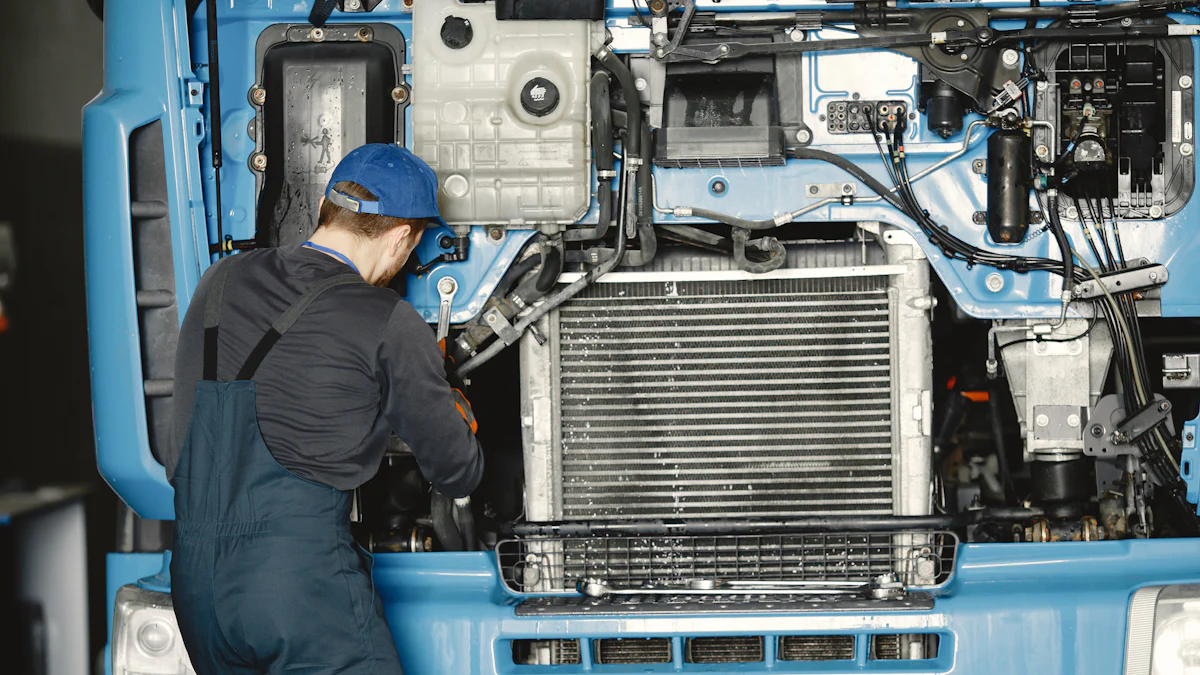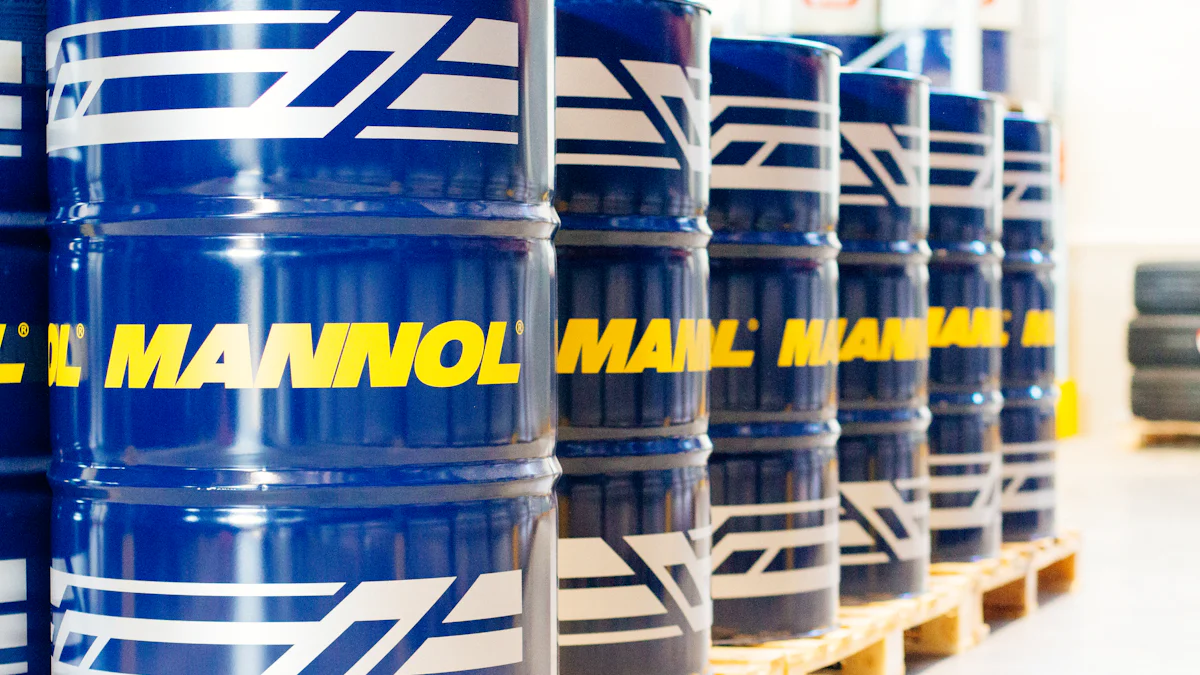
Maintaining a pallet jack is crucial for optimal function and safety. Regular maintenance helps prevent accidents and reduces damages. A well-maintained pallet jack can last up to 10 years, aiding in material handling efficiently. Proper lubrication, part replacement, and routine inspections extend the lifespan of the equipment. Regular maintenance ensures that pallet jacks function properly and safely, preventing costly repairs and replacements.
Regular Inspection

Regular inspection ensures the pallet jack operates safely and efficiently. Daily and weekly checks help identify potential issues early.
Daily Checks
Visual Inspection
A visual inspection helps detect visible damage or wear. Examine the pallet jack for cracks, bends, or other structural issues. Check the wheels for debris and ensure they rotate smoothly. Inspect the handle and forks for any signs of damage.
Operational Test
An operational test confirms the pallet jack functions correctly. Raise and lower the forks to ensure smooth operation. Check the hydraulic system for leaks. Test the brakes and steering for proper functionality.
Weekly Checks
Lubrication Points
Lubrication prevents wear on moving parts. Apply grease to the wheels and axles. Ensure all lubrication points receive attention. Use long-life grease monthly to extend the lifespan of the pallet jack.
Wear and Tear
Inspect the pallet jack for wear and tear. Check the chain for correct positioning. Examine the lowering valve if the forks do not pump or lower properly. Regularly check and top up the oil to maintain proper lubrication.
Proper Lubrication

Proper lubrication is crucial for maintaining the efficiency and longevity of a pallet jack. Lubricating moving parts prevents friction-related wear and corrosion.
Types of Lubricants
Grease
Grease is essential for lubricating the wheels, axles, and joints of a pallet jack. Long-lasting grease reduces friction and wear on moving parts. Apply grease to all lubrication points to ensure smooth operation.
Oil
Oil is another vital lubricant for pallet jacks. Hydraulic oil keeps the hydraulic system functioning properly. Regularly check and top up the oil to maintain optimal performance. Use high-quality oil to prevent leaks and ensure durability.
Lubrication Schedule
Monthly Application
Monthly lubrication is necessary to keep a pallet jack in top condition. Apply grease to the wheels, axles, and joints once a month. Ensure all moving parts receive adequate lubrication. This practice extends the lifespan of the equipment.
Long-life Grease
Long-life grease offers extended protection for pallet jacks. Use long-life grease at lubrication points to reduce the frequency of application. This type of grease provides lasting lubrication, minimizing wear and tear on moving parts.
Correct Usage
Load Limits
Manufacturer’s Guidelines
Always follow the manufacturer’s guidelines for load limits. Overloading a pallet jack can damage components like wheels, axles, and the hydraulic system. Check the manual to understand the maximum load capacity. Operating within these limits ensures the longevity of the equipment.
Safety Margins
Maintain safety margins when loading a pallet jack. Avoid pushing the equipment to its maximum capacity. Staying below the limit reduces strain on the lift forks, bearings, and other parts. This practice helps prevent accidents and extends the lifespan of the pallet jack.
Handling Techniques
Lifting
Use proper lifting techniques to avoid damaging the pallet jack. Position the forks evenly under the load. Ensure the load is stable before lifting. Raise the forks slowly to prevent sudden movements that could cause imbalance.
Moving
Move the pallet jack with care to maintain its condition. Push rather than pull to reduce strain on the operator and the equipment. Navigate turns slowly to avoid tipping. Ensure the path is clear of obstacles to prevent collisions.
Cleanliness
Cleaning Routine
Daily Cleaning
Daily cleaning is essential for maintaining the performance of a pallet jack. Start by removing any debris from the wheels and forks. Use a soft brush to clean the wheels and ensure smooth rotation. Wipe down the handle and frame with a damp cloth to remove dust and dirt. This routine helps prevent premature wear and ensures smooth operations.
Deep Cleaning
Deep cleaning should occur weekly or bi-weekly. Begin by disassembling the pallet jack if possible. Clean each part thoroughly using appropriate tools. Pay special attention to the hydraulic system and moving parts. Use a degreaser to remove built-up grime. Rinse all components with water and dry them completely before reassembly. This process extends the lifespan of the equipment.
Cleaning Agents
Safe Chemicals
Use safe chemicals for cleaning to avoid damaging the pallet jack. Choose non-corrosive cleaners that are suitable for metal surfaces. Avoid harsh chemicals that can corrode or weaken the material. Opt for biodegradable cleaners to minimize environmental impact. Always follow the manufacturer’s recommendations for cleaning agents.
Avoiding Corrosives
Avoid using corrosive substances on the pallet jack. Substances like bleach or strong acids can damage the metal and hydraulic components. Corrosive chemicals can cause rust and weaken the structure. Stick to mild detergents and specialized cleaners designed for industrial equipment. Proper cleaning agents ensure the longevity and safety of the pallet jack.
Storage
Proper Storage Conditions
Indoor Storage
Store pallet jacks indoors to protect them from harsh environmental conditions. A dry area prevents deterioration and rust. Lower the forks to the lowest position to reduce wear on the hydraulic system. Compact storage minimizes space usage and reduces collision risks.
Outdoor Storage
If indoor storage is not possible, use protective covers for pallet jacks stored outdoors. Shielding equipment from rain and direct sunlight prevents corrosion. Ensure the storage area has a solid, level surface to avoid uneven wear on wheels and axles.
Security Measures
Locking Mechanisms
Implement locking mechanisms to secure pallet jacks when not in use. Locks prevent unauthorized access and misuse. Use wheel locks or chain locks to immobilize the equipment. Secure storage reduces the risk of accidents and theft.
Theft Prevention
Enhance theft prevention by storing pallet jacks in a fenced or monitored area. Install security cameras to deter potential thieves. Mark equipment with identification numbers for easy tracking. Regularly check security measures to ensure effectiveness.
Professional Servicing
When to Call a Professional
Signs of Major Issues
Identifying major issues early can prevent costly repairs. Look for signs such as unusual noises during operation. Difficulty in lifting or lowering loads indicates potential hydraulic problems. Frequent oil leaks suggest worn-out seals. Misaligned forks can cause instability and accidents. If the pallet jack shows any of these signs, professional servicing is necessary.
Regular Servicing Schedule
Regular servicing ensures optimal performance and safety. Schedule professional maintenance every six months to a year, depending on usage frequency. Trained technicians can perform comprehensive inspections. They address potential issues that may not be visible to untrained eyes. Regular servicing helps extend the lifespan of the equipment.
Choosing a Service Provider
Credentials
Selecting a qualified service provider is crucial. Check for certifications and training credentials. Ensure the technicians have experience with pallet jacks. Verify that the service provider follows industry standards. Proper credentials guarantee high-quality maintenance and repairs.
Reviews and Recommendations
Customer reviews and recommendations provide valuable insights. Look for service providers with positive feedback. Check online reviews and ratings. Ask for recommendations from other businesses. Satisfied customers often indicate reliable and efficient service. Choosing a reputable provider ensures the best care for your pallet jack.
Maintaining a pallet jack involves six key practices. Regular inspections, proper lubrication, correct usage, cleanliness, appropriate storage, and professional servicing ensure optimal performance. Prioritizing regular maintenance enhances the lifespan and efficiency of pallet jacks. Implementing these practices prevents accidents and reduces repair costs. Consistent care guarantees reliable and safe operation. Following a maintenance plan is essential for longevity and productivity. Investing time in these methods results in a well-functioning pallet jack.
Post time: Jul-09-2024
